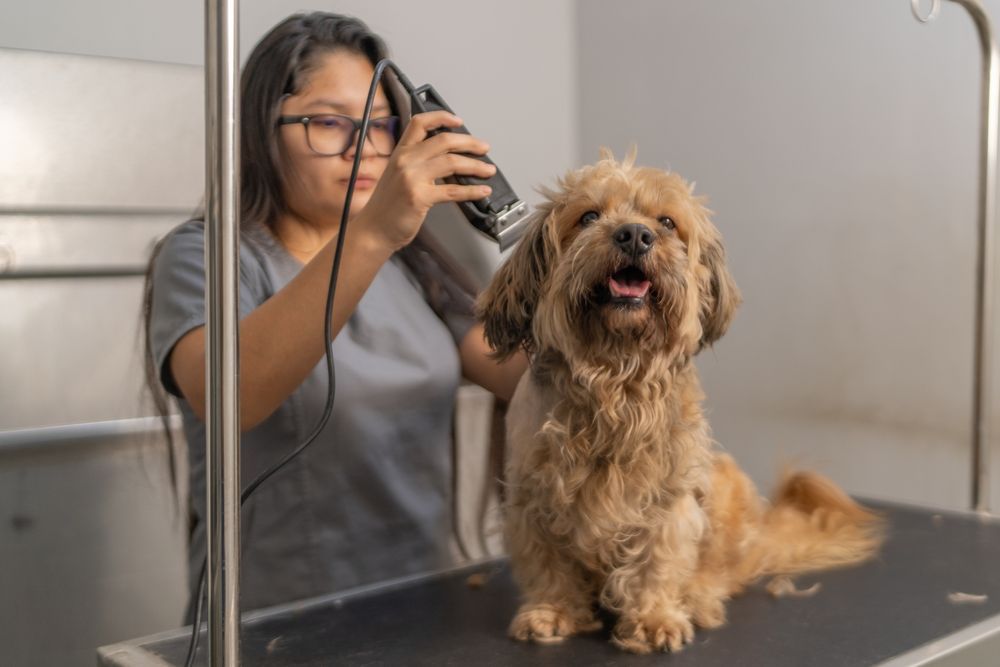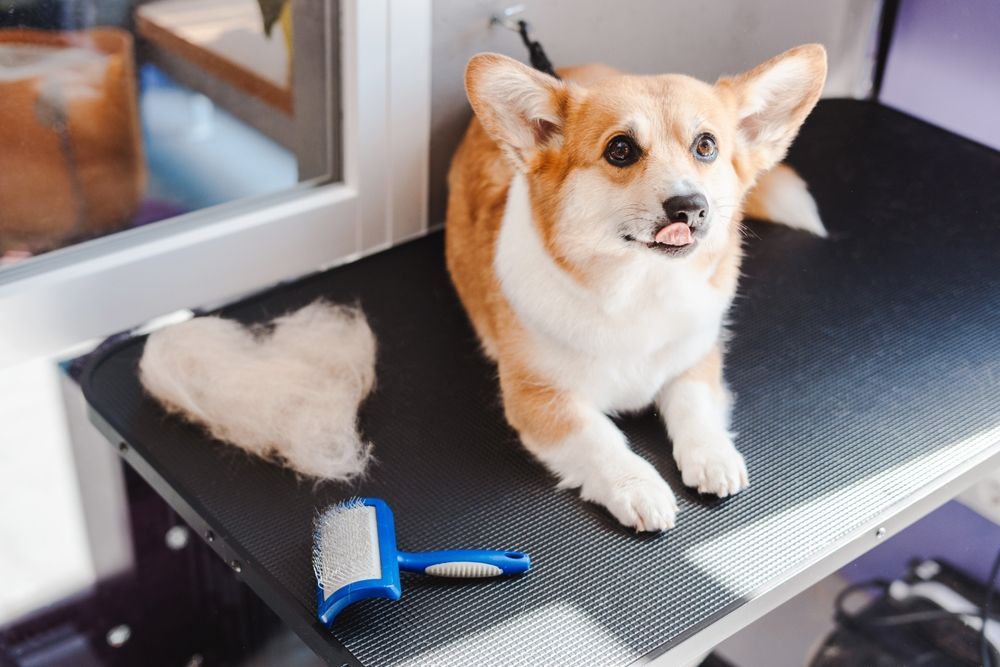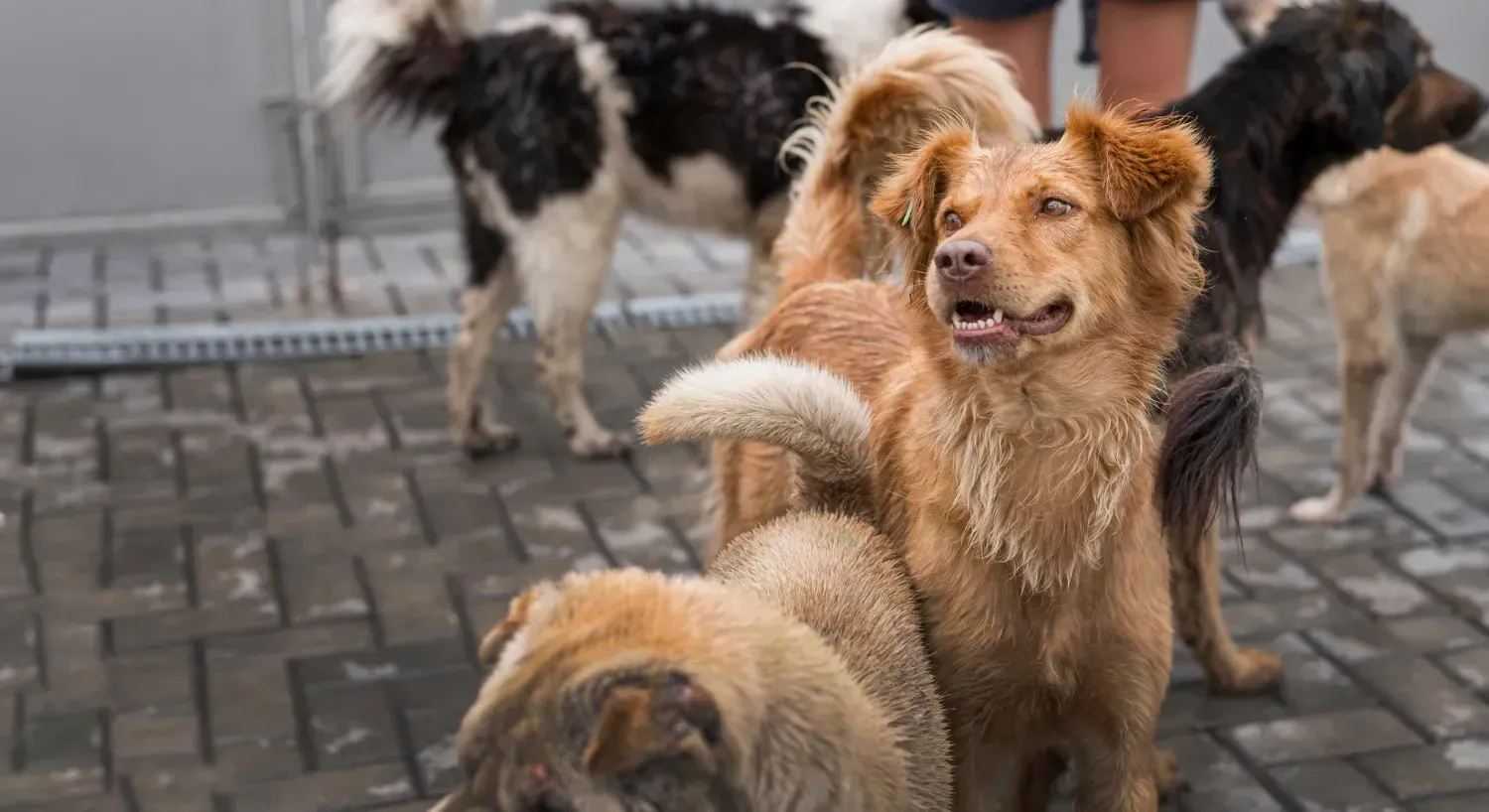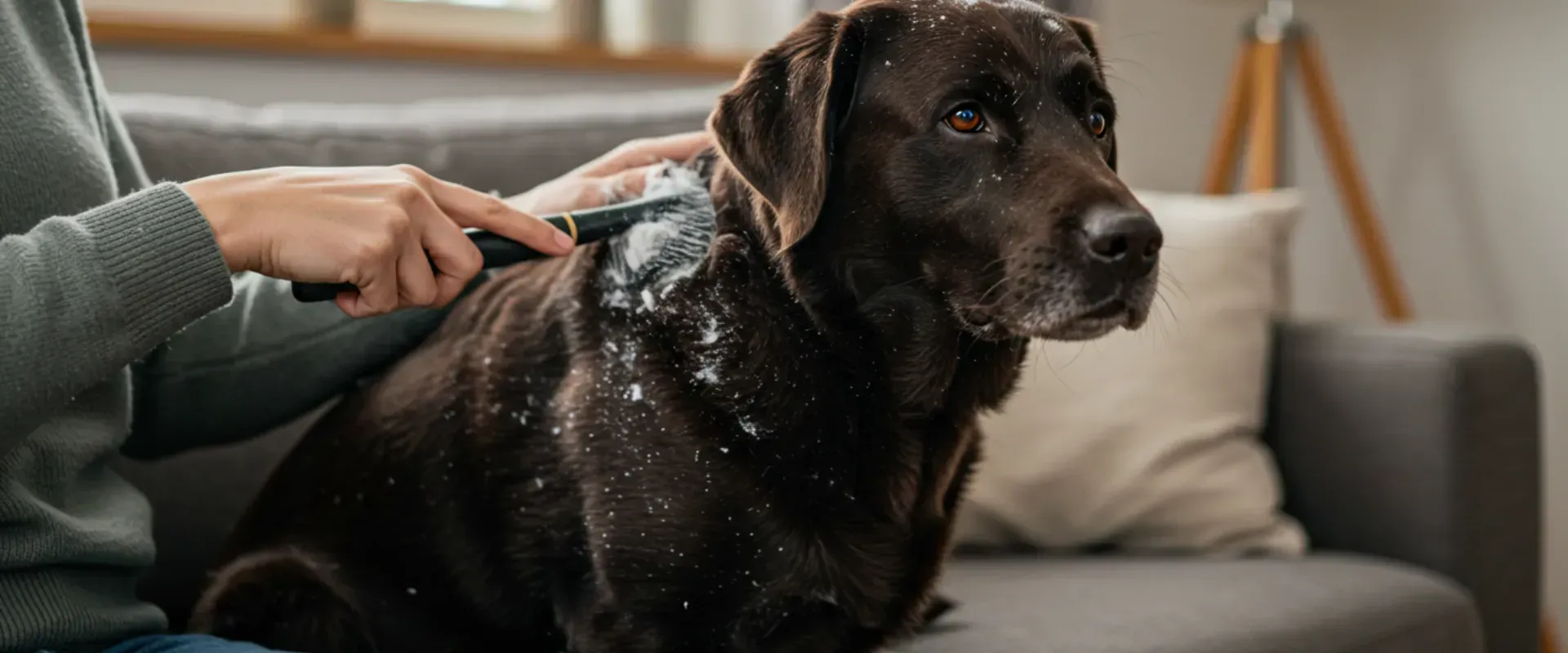Dog Skin Conditions: Causes & Care Tips
As a pet parent, you know your dog better than anyone. You can tell when they’re happy, sad, or feeling unwell. One of the most common signs of a health issue is a change in their skin or coat. Constant scratching, redness, or hair loss can be distressing for both you and your furry friend. The first step to providing relief is understanding the cause. So, when should you worry about itchy dog skin, and what can you do about it?
Just like humans, dogs can suffer from a variety of skin conditions. These can range from mild dry skin in dogs to more severe issues like infections and allergic reactions in dogs. Identifying the root cause is crucial for effective treatment. This guide will walk you through common dog skin problems, their causes, and how proper care, including knowing when to book seasonal mobile dog grooming, can keep your dog’s skin healthy and comfortable.
Understanding these conditions will not only help you provide immediate relief but also prevent future flare-ups. A healthy coat starts with healthy skin, and with the right knowledge, you can ensure your companion looks and feels their best all year round.
Common Dog Skin Conditions and Their Causes
Noticing a change in your dog's skin can be worrying. Is it just a minor irritation or a sign of something more serious? Here’s a breakdown of some of the most frequent skin issues that affect our canine companions.
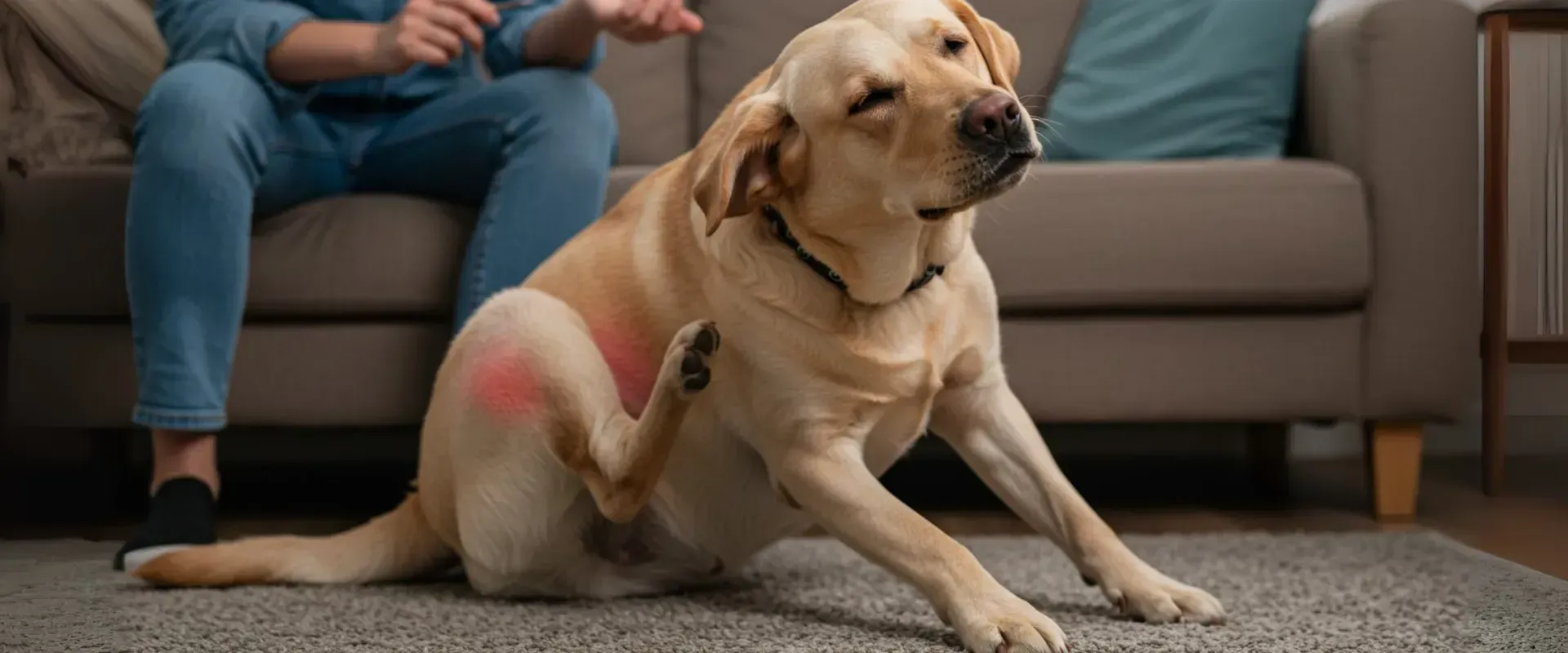
1. Allergic Dermatitis
This is one of the most common reasons for an itchy dog. Allergic reactions in dogs can be triggered by a few different things:
- Environmental Allergies: Just like people, dogs can be allergic to pollen, dust mites, mold, and grass. These allergies often pop up or worsen during certain times of the year, which is a key factor in deciding when to book seasonal grooming.
- Food Allergies: Some dogs develop allergies to specific ingredients in their food, most commonly proteins like chicken, beef, or dairy. This can lead to persistent itchy dog skin, especially around the ears, paws, and belly.
- Flea Allergy Dermatitis: This is an allergic reaction to flea saliva. For a sensitive dog, even a single flea bite can cause intense itching, redness, and dog rashes.

2. Dry Skin (Xerosis)
Does your dog have flaky, dandruff-like skin? Dry skin in dogs is a frequent issue, especially during colder, less humid months. It can also be caused by nutritional deficiencies, particularly a lack of omega-3 fatty acids, or from using harsh shampoos that strip the skin of its natural oils. While it might seem minor, dry skin can be very uncomfortable and lead to excessive scratching, which can damage the skin barrier.
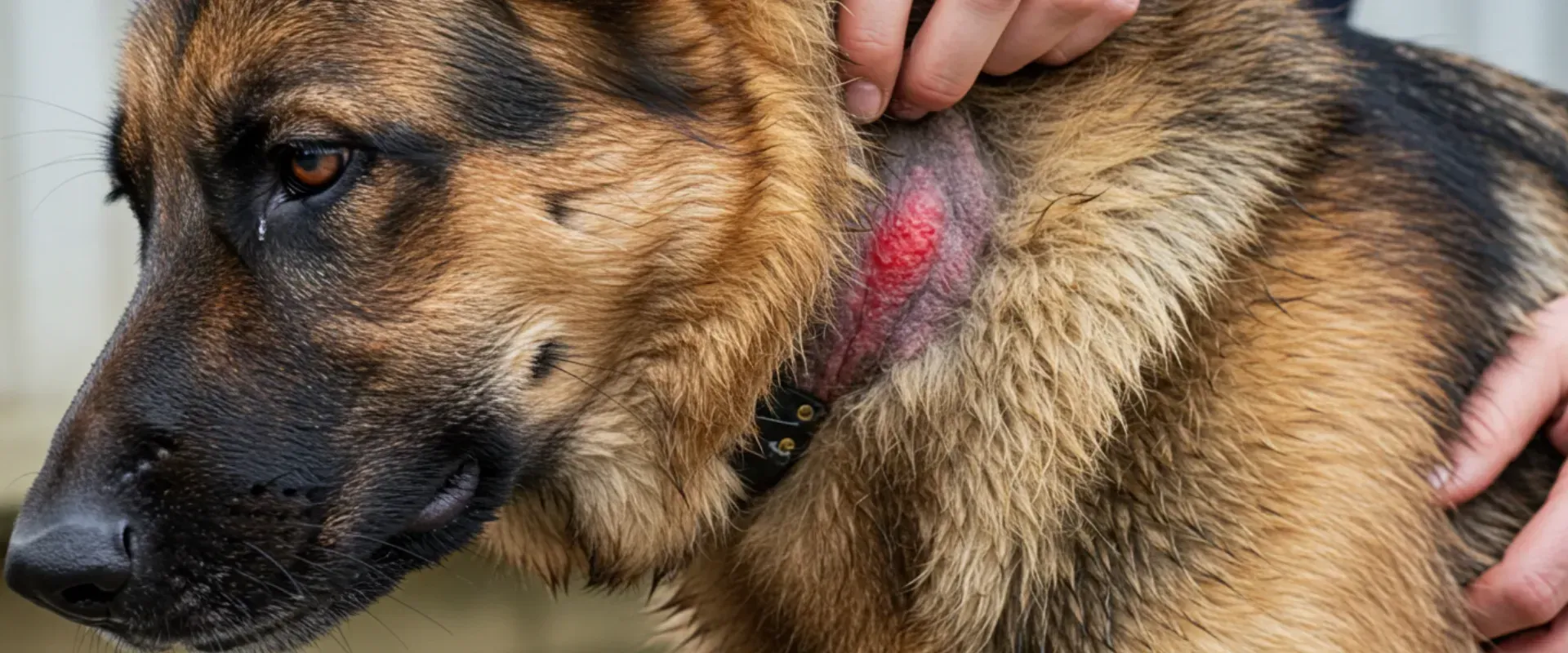
3. Hot Spots (Acute Moist Dermatitis)
Hot spots on dogs are painful, inflamed patches of skin that appear suddenly and can grow rapidly. They are often caused by excessive
dog paw licking, chewing, or scratching an area excessively, usually in response to an underlying irritant like a flea bite, an allergic reaction, or even stress. The constant moisture from licking creates a perfect environment for bacterial infections, making the area red, raw, and oozy.
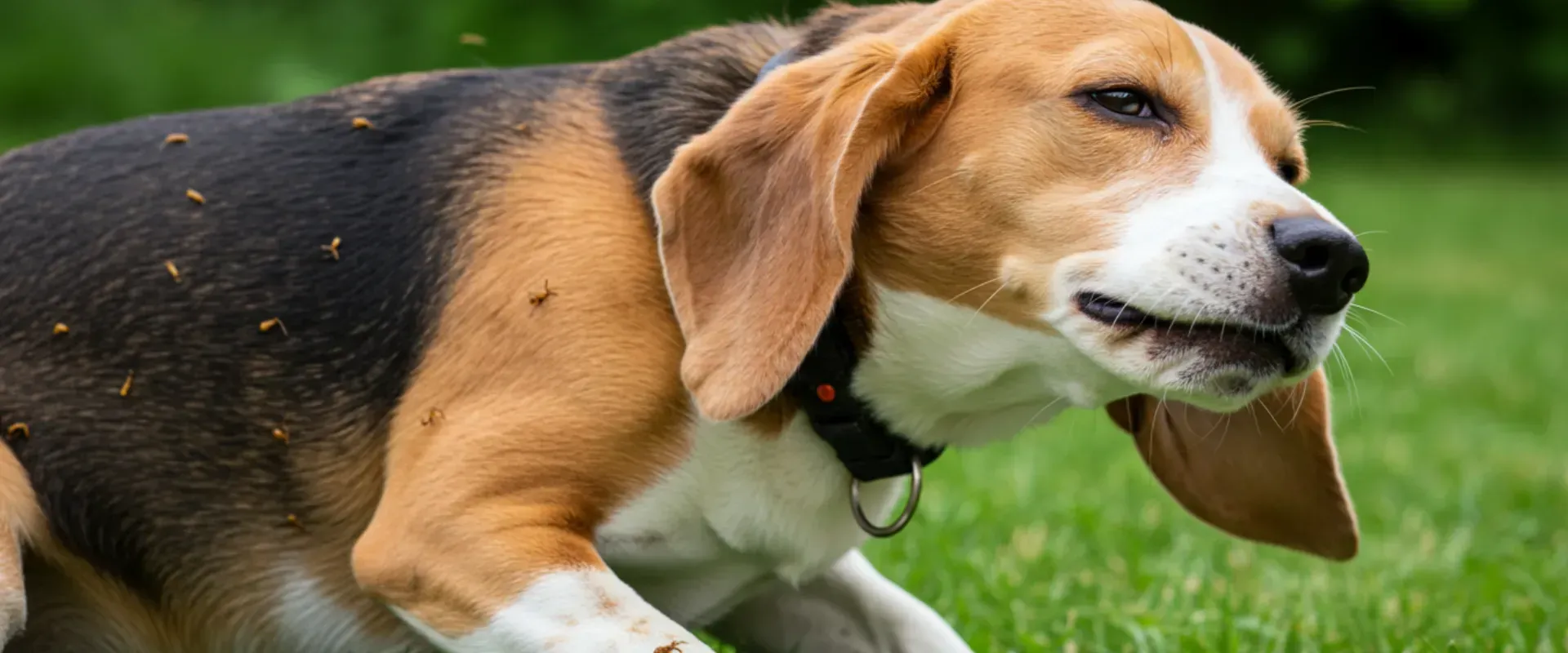
4. Parasitic Infections
Several tiny pests can make a home on your dog’s skin and cause big problems:
- Fleas and Ticks: These are well-known culprits that cause intense itching and can transmit diseases.
- Mites (Mange): Sarcoptic mange (scabies) is highly contagious and causes extreme itchiness, hair loss, and sores. Demodectic mange is caused by a different mite and is less contagious but can still lead to bald patches and sores, especially in dogs with weakened immune systems.
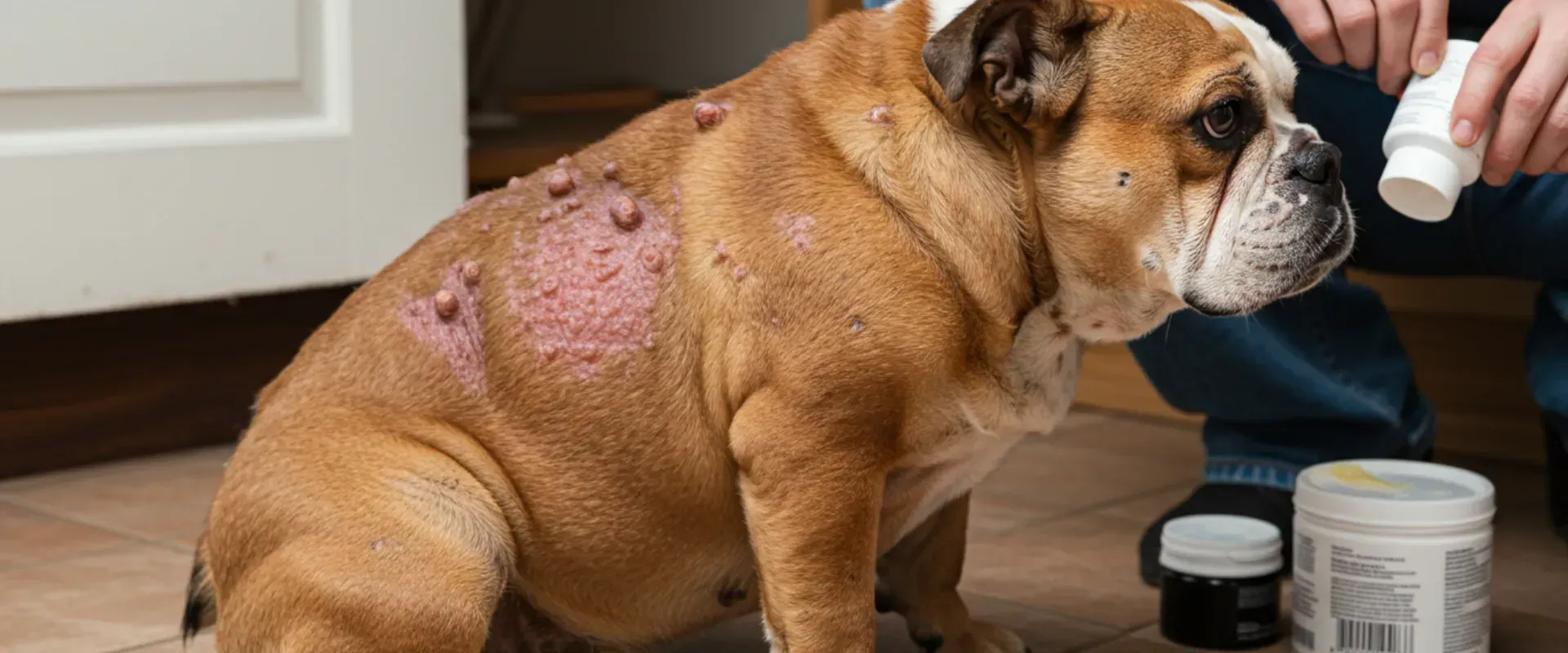
5. Fungal and Bacterial Infections
Yeast and bacteria naturally live on your dog’s skin, but an overgrowth can lead to infection.
- Yeast Infections: These often occur in warm, moist areas like the ears, paw pads, and skin folds. Signs include itchy dog skin, a greasy coat, a musty odor, and thickened skin.
- Bacterial Infections (Pyoderma): This can be a primary issue or develop secondary to another skin problem, like allergies or hot spots. It appears as pimples, crusts, or circular dog rashes.
Recognizing these conditions is the first step. Next, let’s look at how professional grooming can be a powerful tool in managing them.
The Role of Seasonal Grooming in Skin Health
Your dog's grooming needs change with the seasons. Understanding when to book seasonal grooming is essential for preventing and managing many common skin conditions. Professional groomers do more than just give your dog a haircut; they provide specialized care that supports healthy skin and fur year-round.
Why Seasonal Grooming Matters
As the weather changes, so do the challenges to your dog’s skin.
- Spring: As temperatures rise and plants bloom, environmental allergens like pollen become widespread. A professional grooming session can wash away these allergens from your dog's coat, reducing the risk of allergic reactions in dogs. A shorter haircut can also help keep them cool and make it easier to spot any ticks after outdoor adventures.
- Summer: The heat and humidity of summer can worsen issues like hot spots on dogs. Regular grooming helps prevent matting, which traps moisture and heat against the skin. A proper summer trim keeps your dog comfortable without compromising the coat's ability to protect against sunburn.
- Autumn: As shedding increases in preparation for a thicker winter coat, dead hair and dander can build up. This can lead to dry skin and irritation in dogs. A
dog de-shedding treatment is crucial during this time to remove the undercoat and allow the skin to breathe.
- Winter: Cold air and indoor heating can strip moisture from your dog's skin, leading to flakiness and itching. A professional groomer can use moisturizing shampoos and conditioners to combat dry skin in dogs. They also ensure paw pad are sanitary trimmedand protected from ice, salt, and chemical deicers.
Knowing when to book seasonal grooming with a trusted service ensures your dog receives the right care at the right time.
How Professional Grooming Helps
A skilled groomer provides several benefits for skin health:
- Thorough Cleaning: Professional-grade shampoos and tools remove dirt, dander, and allergens more effectively than at-home baths.
- Proper De-Shedding: Groomers use specific techniques and tools to remove loose undercoat, which reduces shedding and prevents matting that can lead to skin irritation.
- Skin Inspection: A groomer is often the first to notice subtle changes in your dog's skin, such as small bumps, redness, or parasites. Early detection of dog rashes or infections can lead to quicker treatment.
- Tailored Products: A professional pet groomer uses premium, pH-balanced, vet-approved products. For dogs with sensitive skin, they can use hypoallergenic shampoos to soothe irritation and prevent flare-ups.
Regular grooming appointments create a consistent care routine, which is key to managing chronic conditions like allergies and dry skin in dogs.
At-Home Care Tips for Healthy Dog Skin
While professional grooming is vital, your daily care routine at home plays an equally important role. Here are some practical tips to keep your dog’s skin in top condition between grooming appointments.
1. Regular Brushing
Regularly brushing your dog’s coat several times a week is one of the best things you can do for their skin. It distributes natural oils, which helps prevent dry skin in dogs. It also removes loose hair, dirt, and dander, and prevents detangling dog hair that can pull on the skin and cause pain.
2. Balanced Nutrition
A healthy diet rich in fatty acids supports skin and coat wellness. Make sure you’re feeding based on your dog’s life stage for the right balance of nutrients. Look for dog foods rich in omega-3 and omega-6 fatty acids, as these are essential for maintaining a healthy skin barrier.
3. Regular Skin Checks
Make it a habit to check your dog’s skin and coat during cuddle time or while brushing. Run your hands over their entire body, feeling for any unusual lumps, bumps, or scabs. Look for signs of fleas, redness, or hot spots on dogs. Part the fur to inspect the skin underneath, especially in areas prone to irritation like the belly, armpits, and ears.
4. Choosing the Right Products
If you bathe your dog at home, use a gentle, dog-specific shampoo. If your dog has a known condition, ask your vet or groomer to recommend a medicated or hypoallergenic shampoo.
Keeping Your Dog Happy and Healthy
A healthy dog is a happy dog, and their skin is a direct reflection of their overall well-being. While skin issues like itchy dog skin, dog rashes, and allergic reactions in dogs are common, they are often manageable with the right approach.
By understanding the causes, implementing a solid at-home care routine, and knowing when to book seasonal grooming, you can keep your furry friend comfortable and content. Remember that persistent skin problems always warrant a visit to the vet to rule out underlying health issues.
From hot spots to allergic reactions, skin issues can be tricky to manage alone. Many owners schedule seasonal grooming appointments to help keep their dog’s coat clean and reduce the risk of recurring skin problems.
Frequently Asked Questions
How often should I bathe my dog to prevent skin problems?
The frequency of
dog baths depends on your dog's breed, lifestyle, and any existing skin conditions. Generally, bathing once a month is sufficient for most dogs. Over-bathing can cause dry skin in dogs, while infrequent bathing can lead to a buildup of dirt and oil.
Can I use human lotion on my dog's dry skin?
No, you should not use human lotion on your dog. Human skin has a different pH balance, and the ingredients in our lotions can be irritating or even toxic to dogs if licked. Always use products specifically formulated for canine skin.
What are the first signs of an allergic reaction in dogs?
The earliest signs of allergic reactions in dogs often include excessive scratching, licking, or chewing at their paws, flank, or ears. You might also notice redness, swelling, or dog rashes on the skin. If you see these signs, it's a good idea to consult your vet.
Are hot spots on dogs an emergency?
While not typically life-threatening, hot spots on dogs can be extremely painful and can spread quickly. It's best to see a vet as soon as you notice one to get proper treatment and prevent the infection from worsening.


